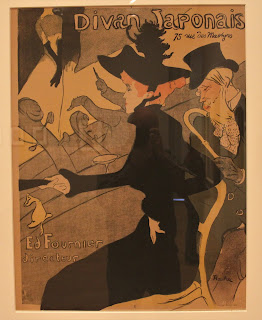So I am doing 3 blogs, the first on the exhibition, the second on the decorative arts, and the third on the permanent paintings.
Here we go.
 |
A few views along the way.
Such a combination of bright sunlight and snow.
|
 |
| The Clark |
 |
| Susan ready for some art. |
 |
Philippe-Joseph Brocard French 1831-1896
Mosque Lamp c. 1880
I love this lamp and have photographed it every visit.
|
 |
Henri Matisse French 1869-1954
"Pianist and Checker Players: 1924
|
 |
Aubrey Beardsley English 1872-1898
From the illustrations for Oscar Wilde's "Salome"
"The Eyes of Herod"
1894
|
 |
from the same as above:
"The Climax"
|
 |
Max Klinger German 1857-1920
from "Preserving Ovid's Offering"
"Narcissus and Echo II" 1879
|
 |
Paul Elie Ranson French 1861-1909
"Tiger in the Jungle" 1893
|
 |
Henri de Toulouse-Lautrec French 1864-1901
"Divan Japonais" 1893
|
 |
Alphonse Marie Mucha Czech 1860-1939
"Biscuits LeFevre-Utile" 1896
|
 |
| detail of above |
 |
Mucha
"Zodiaque" ("La Plume") 1896-97
|
 |
Toulouse-Lautrec
"Jane Avril" 1899
|
 |
William Blake English 1757-1827
"Job's Evil Dreams" 1825
|



No comments:
Post a Comment